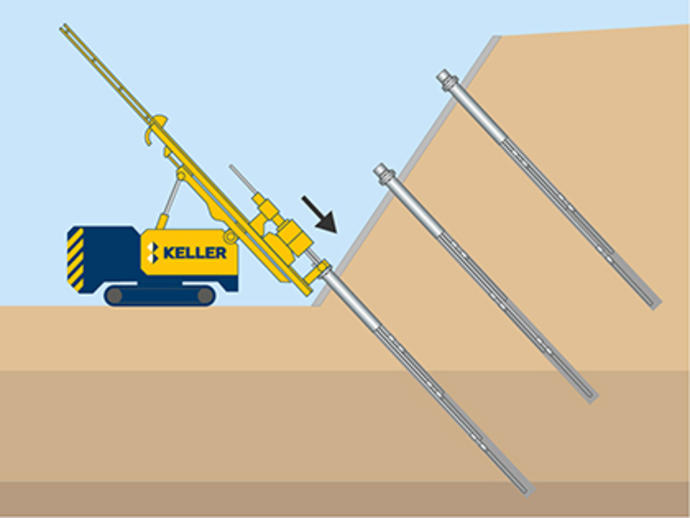Slope stabilization is often required to retain soil in natural, unstable slopes or man-made excavations. Keller draws on its extensive experience with the full range of techniques to provide optimal slope stabilization solutions for various projects.

Common Uses
- Stabilize natural or man-made slopes
Keller stabilizes slopes using external support methods such as tieback anchors or micropiles. To stabilize slopes, Keller can also use internal stabilization methods like soil nailing or grouting. Repairing landslides or stabilizing natural or engineered embankments or fill slopes requires experienced personnel familiar with the unique requirements for this type of project.
Various types of soil or rock slopes may require stabilization during initial design or remedial repairs after a slope failure. Also, repairing Mechanically Stabilized Embankment (MSE) walls is a specialty segment of this type of work. Slopes may fail for various reasons, such as erosion, marine wave action or currents, rain, and elevated groundwater levels. Also, adjacent cuts or excavations, utility leaks, freeze/thaw, or earthquakes can initiate unwanted slope failure.
The factor of Safety (FOS) is the ratio of the resisting forces divided by the driving forces for a slope. This ratio must be greater than 1.0, or the slope will fail. Typically, the static FOS should be 1.3-1.5 to prevent undesirable creep or movements of the slope. The factor of safety, both statically and dynamically (earthquake loadings), can be substantially increased by providing external resisting forces to the slope by using tieback anchors with soldier piles or concrete reaction blocks. The FOS can also be increased using soil nailing and/or grouting to stabilize the slopes internally.
Many of these projects are performed design/build. Keller routinely provides these projects using design/build. We have a long resume of completed complex slope stabilization projects.